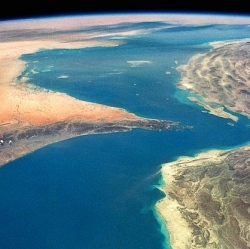
Private spaceflight company Blue Origin has successfully launched and landed its New Shepard rocket for the third time. CEO Jeff Bezos tweeted that the rocket had a clean launch and a "perfect booster landing." The vehicle tested is the same that successfully launched and landed in November and then again in January.
This is the second time this New Shepard has been "reused" after launching into space. Bezos noted beforehand that Blue Origin was trying out a couple new things with this launch. To perform its landing post-launch, the New Shepard rocket restarted its engine "fast at high thrust" just 3,600 feet from the ground.
If the engine didn’t restart at that height, then the rocket would have slammed into the ground in six seconds, according to Bezos. Blue Origin also planned to test out new software that controls one of the crew capsule’s control systems, which Bezos said would be a big "performance win" if it works.
This is the first test flight that Blue Origin has publicly announced prior to launch, an indication that the company is trying to be more transparent. In the past, the normally secretive company only announced its test launches after they were successfully completed, usually by releasing a highly stylized video of the mission. Blue Origin has also been known for shying away from interviews, but last month, the company recently let a select group of journalists into its headquarters in Kent, Washington, allowing them to tour the facility.
During that press tour, Bezos said the first crewed test flights of the New Shepard will begin in 2017, with the first tourists going up in 2018. The New Shepard is Blue Origin’s premiere rocket meant to take paying customers into sub-orbital space. The vehicle is designed to launch a crew capsule filled with six passengers to a height of 62 miles above the Earth’s surface.
There, the capsule will detach from the rest of the rocket, and crew members on board will experience four minutes of weightlessness. Eventually both the rocket and the capsule will fall back to Earth; the rocket will use its engines to land vertically back ground, while parachutes will lower the capsule safely.
